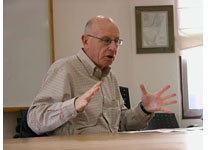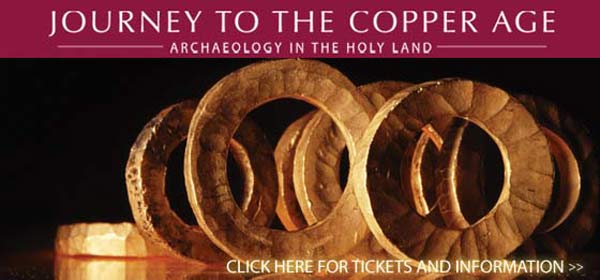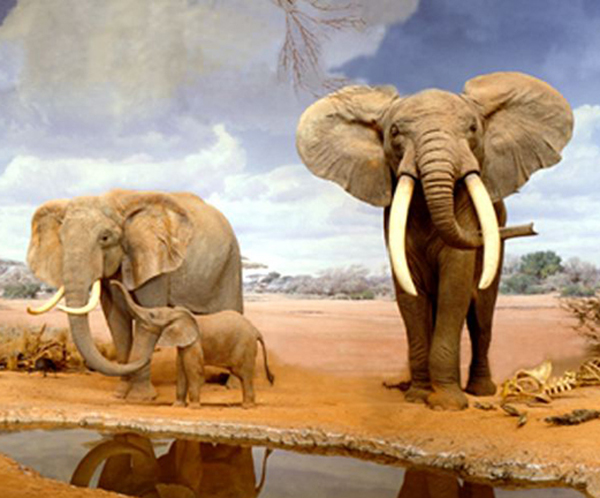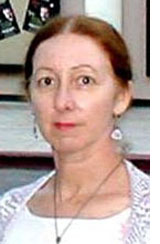| |
|

Scholars-in-residence
program
Presentations are free; kosher meals moderately priced
● Rabbi
Yakov Horowitz, founder, Project Y.E.S. (Youth Enrichment Services)
for
Agudath Israel, Jan. 4-5
● Rabbi Ari
Kahn, director, Foreign Student Programs,
Bar Ilan University, Israel, Feb.
22-23
Call us for details at (619)
287-9890, Reserve Shabbaton meals before January 2
|

LETTER FROM JERUSALEM
An Israeli view of the 'settlements'
By Ira Sharkansky
 JERUSALEM—Once again American officials are pressing Israelis to limit the construction of housing for Jews over the pre-1967 border, and to dismantle existing settlements, especially the "illegal" ones established without the approval of the Israeli government. Without those actions, according to Secretary of State Condoleezza Rice and others, Israel will not build confidence among the Palestinians. The lack of Palestinian confidence will threaten the peace process. JERUSALEM—Once again American officials are pressing Israelis to limit the construction of housing for Jews over the pre-1967 border, and to dismantle existing settlements, especially the "illegal" ones established without the approval of the Israeli government. Without those actions, according to Secretary of State Condoleezza Rice and others, Israel will not build confidence among the Palestinians. The lack of Palestinian confidence will threaten the peace process.
Some time ago, an American friend asked me to summarize for him
Ira Sharkansky
the arguments in favor of the settlements.
There are no good general arguments. The devil is in the details. In my view, Israel had a right to settle, if only to pressure Palestinians and other Arabs who refused for years after 1967 to negotiate the future with Israel. Some settlements are too large and established to consider giving up. Holding others is more difficult to justify.
Dispute starts with an Israeli view of the status of the West Bank and Gaza. They were never occupied by an Arab government recognized as sovereign. Jordan's occupation of the West Bank after 1948 was recognized only by the United Kingdom and Pakistan. In an Israeli view of international law, the areas were open to Israeli settlement after 1967 insofar as they had lacked a sovereign power.
In the realities of international politics, there are not many countries beside Israel that accept the view that the territories are "disputed," rather than "occupied."
After the 1967 war the Arab declaration (done at Khartoum) was no peace, no recognition, and no negotiation with Israel. Israel held off settling for some time, except in an area annexed to Jerusalem. Now there are perhaps 185,000-200,000 Jews living in new neighborhoods of Jerusalem, and another 270,000 living in other settlements. About 80 percent of those 270,000 are close to the pre-1967 border. Some are suburbs of Jerusalem or Tel Aviv, with 10,000-35,000 residents apiece, and are not on the table for negotiation. At Camp David (in 2000), Palestinians seemed willing to have Israel absorb those, in exchange for concessions elsewhere. Most of the people in the large settlements are not marked by any strong fervor associated with the Land of Israel, or God-given privileges.
Beyond those settlements are smaller communities, typically religious and intense. In their behalf, it can be said that these settlements represent pressure on the Palestinians. The sooner the Palestinians negotiate seriously, the more land they will receive. The longer it takes, the larger and more "permanent" each settlement can become, and an Israeli government will be less likely to give it up. Most of these settlements were approved by the Israeli government, and the construction subsidized. Some of the residents have been there for more than 30 years. When they accuse the Israeli left of efforts to ethnically cleanse the Jews, they have a point.
There are "illegal" settlements, some of them no more than a few trailers on a hilltop. They appeared without the approval of the Israeli government. The United States and the Israeli left have made a big case about Israel having to remove them. The army has removed some of them, but the residents come back the next day with another trailer. This is a cat and mouse game that seems foolish to pursue. These settlements are small, scatttered, and serious nuisances. The army has to protect them. If it did not, the larger settler community would have an incentive to protect them by attacking nearby Palestinians. The Palestinians have enough trouble with numerous armed bands, each pursuing their own missions. We do not want that to happen among us.
About the small settlements (legal and illegal) it can be said that they are an affront to the sensibilities of Palestinians and many others. They are easy targets for Palestinian violence and are costly to defend. They contain the most intense of the religious nationalists, whose style of politics is to shout selective quotations from holy text. Those people are about as attractive as those who scream about abortion in the United States.
In recent years Israel has responded to Palestinian violence by constructing a security barrier to protect its cities and major settlements. For Israeli leftists and much of the international community, the portions of the barrier built to the east of the pre-1967 boundary are yet further Israeli offenses to peace and good sense. Most of the Israeli population seems to accept the claims of the defense establishment that the barrier has limited violence against Israeli civilians.
The official Israel position is that the barrier is not an effort to define new boundaries unilaterally, but let's assume that the barrier defines what Israel wants to keep. To the east of the barrier are those settlements that might be withdrawn for the sake of peace. Currently they contain about 62,000 Jewish residents. Twelve thousand of these residents live in the Jordan Valley, south of Beit Shean and north of Jericho. These settlements fit into a separate category of Israeli thinking. They represent a buffer that will allow Israel to control access to Palestine if it is ever created. As long as Israeli distrust of Palestinians remains anywhere close to its present level, those Jordan Valley settlements are not likely to be on the table for negotiations. (For recent population check this link.
When Ehud Olmert campaigned in the election of 2006, he expressed his intention of following the dismantling of settlements in Gaza with further withdrawals from the West Bank. Since then, he has expressed support for the American position of limiting new construction and withdrawing the illegal settlements.
Where Olmert and the Americans come up against Israeli realities is the continued shelling of Jewish communities near Gaza. The 20,000 Israelis living in Sederot suffer from daily warnings and actual explosions of mortars and missiles on and alongside their homes, shops, schools, and places of work. Another 108,000 Israelis in Ashkelon live on the outer range of the Palestinian missiles. They, too, have had explosions in their neighborhoods.
One opinion widespread in Israel is a willingness to give up settlements for the sake of peace. Yet another opinion widespread is a distrust of Palestinians in the West Bank to respond any better than the Palestinians in Gaza. The fear is that withdrawals will produce missile and mortar attacks on Jerusalem and other major settlements.
Two parties in Olmert's coalition, with a total of 23 seats, seem dead set against the withdrawal of any settlements, legal or illegal. The 55 members of other parties in the governing coalition do not make up a majority of the Knesset, and some of them are less than enthusiastic about withdrawing settlements.
In short, it seems that Israel, the Americans, and the Palestinians will have to live with Israeli ambivalence, delay, and cumbersome inaction with respect to the settlements. Construction is likely to continue in areas that Israel (but no one else) defines as within the municipal boundaries of Jerusalem.
Can the peace process proceed without decisive Israeli action on the settlements? A question with equivalent moral weight is whether the peace process can continue as long as the mortars and missiles fall on Sederot and Ashkelon, and organizations affiliated with the Palestinian party of Mahmoud Abbas continue in their violence against Israelis.
My guess is that the peace process will continue if the Palestinians recognize that they have no monopoly of justice, and work to make Israelis feel more secure. It would help if the Americans and other friends nudge the Palestinians in that direction. Sadly, I do not expect these miracles to occur.



THE JEWISH CITIZEN
Religious study in hall of African mammals
By Donald H. Harrison
 LOS ANGELES—While Nancy and I strolled through the Natural History Museum of Los Angeles County, our grandson Shor did a doubletake. Were those two children his age speaking Hebrew? Yup, or should I say ken, they were indeed. Their names were Tamara and Yael, and they were visiting from Rehovot, home of the Weitzmann Institute. LOS ANGELES—While Nancy and I strolled through the Natural History Museum of Los Angeles County, our grandson Shor did a doubletake. Were those two children his age speaking Hebrew? Yup, or should I say ken, they were indeed. Their names were Tamara and Yael, and they were visiting from Rehovot, home of the Weitzmann Institute.
"Your Jewish story everywhere?" Nancy inquired. "Too easy," I replied. "I want to find something right here in the museum."
Donald H. Harrison
We toured through the Discovery Center where Shor could measure himself against a polar bear (Shor came to about thigh level I would say), feel the pelts of a coyote, opossum, badger and racoon, and try on the antlers of a deer, moose and ram. Inside a small room labeled a "treasure vault,", we found children's and adults' drawings of various animals. We got to hold in our hands large chunks of minerals as they might be found in mines. Fun but not particularly Jewish. Maybe upstairs?
We went to the hall of African mammals, where stuffed elephants, hippopatamuses, black rhinos, chimpanzees, a gorilla, a bongo, greater kudo, spotted hyena, lions, opaki and other species are placed realistically in dioramas created by artists. Most people might go down one side of the hall to the far end where the elephants are, and then return via the other side. But Shor, I learned, has his own way of touring museum exhibits. He raced first to the exhibit on one side, then to the exhibit facing it on the other side, then back to the next one on the first side, and next back to the other side--a zigzag course that increased his exercise quotient and grandma's and grandpa's likely fatigue exponentially.
As I looked at the display of lions, I thought of the article by Rabbi Leonard Rosenthal of Tifereth Israel Synagogue on Sunday telling why the tribe of Judah is identified with lions. And then I smiled. In this very hall, I realized, there probably were numerous animals that could be found in Torah, Talmud and other important Jewish writings. I realized that the Natural History Museum in Los Angeles is to dead animals as the San Diego Zoo is to live ones: a repository that can help students not only understand the secular world but also portions of the religious one.

The dominant exhibit in the hall of African mammals is that of the elephants, about which there is a considerable body of discussion in Jewish writings. The Zoo Rabbi, as Rabbi Natan Slifkin of the Jerusalem Zoo is called, in a recent essay discussed the problem of elephants in the Jewish custom for taking possession of animals. Under ordinary circumstances, one lifts or raises the animal to show possession, but an elephant is not ordinary by any stretch of the imagination. Lifting one, of course, is impossible.
So various Talmudic scholars tackled the question of how one can cause a heavy elephant to rise sufficiently to prove new ownership. One suggested that having an elephant walk on a pile of vines would raise the animal sufficiently. Another suggested that if the vines were hanging on a tree, the elephant would jump to reach them. Tosofos, a commentary on the Talmud, is considered authoritative by many, but there is the problem that physically elephants are not able to jump. Some Jews are reluctant to doubt such an authority, so there are some people who persist in believing that an elephant can jump afterall.
On the Aish website, and others, there is the well-known parable about four blind men who grab different parts of an elephant. "One grabs the leg and concludes it is a tree trunk. One holds the tail thinking it is a whip. Another touches the elephant's trunk and decides it's a hose and the fourth man pats the side concluding it's a wall." Too often, it seems, we jump to conclusions because we get only part of the story.

Should one move from the elephant exhibit back up the hall to the lowland gorilla exhibit, another story about Rabbi Slifkin of the Jerusalem Zoo comes to mind. As was told in an article by Benyamin Cohen in American Jewish Life, while visiting the gorilla exhibit at Zoo Atlanta, Slifkin, an Orthodox Jew, suggested that "with certain key modifications, evolution is an acceptable method of understanding how God might have created the world. 'Evolution is a very elegant way of creating an incredibly diverse animal world,' he says."
Such views have caused Slifkin's books to be banned by some Orthodox authorities, who also have demanded that Slifkin recant his views as heresy. To date, he has refused.
It occurred to me that one might take a laptop with a good wireless access to the Internet on a visit to the Natural History Museum of Los Angeles County and become as deeply lost in Torah studies as students at any Jewish seminary.
To that point, Nancy, Shor and I had scratched only the surface of this massive museum. There was a Hall of North American Mammals to be seen, and many exhibits on dinosaurs!


A Jewish Child Grows Up on Christmas Eve
By Sheila Orysiek
 SAN DIEGO—As a Jewish child born and raised in the large metropolitan city of Philadelphia I sensed from my earliest years that I was part of a community comprised of many different religions and ethnicities. However, it was a remote recognition because my entire world was insulated by the layers of a Jewish family, friends and the largely Jewish neighborhood and school which surrounded me. SAN DIEGO—As a Jewish child born and raised in the large metropolitan city of Philadelphia I sensed from my earliest years that I was part of a community comprised of many different religions and ethnicities. However, it was a remote recognition because my entire world was insulated by the layers of a Jewish family, friends and the largely Jewish neighborhood and school which surrounded me.
For those of us raised in such a milieu, there usually comes a day, somewhere in our journey to adulthood, when we realize very graphically that our immediate environment is but a small slice of a much larger pie. One day, there it is – a window to other ways of living, the different holidays and customs of a much larger community some of which we had previously been entirely unaware. Becoming aware of one’s small niche in that more complex mosaic is essential to the process of maturation. Such an event
Sheila Orysiek
happened to me early in my fourteenth year in the month of December, at midnight.
The early adolescent years are difficult at best, however if they include additional upset such as financial problems, this difficulty is exacerbated. My parents had bought a thriving business of home delivery of bread, rolls, and pastries but unfortunately within the first couple of months my father’s delivery truck was destroyed by an uninsured drunk driver who had no personal assets. After hospitalization, my father’s injuries kept him at home for several weeks. When he was able to return to his delivery route, the business had been severely compromised and every bread order and every customer who remained was crucially important.
Because people enjoyed the wonderful (and they were wonderful Gold Medal Bakery) breads, rolls and pastries at their front door especially on Sunday morning, Saturday night was his busiest time. On Saturday nights he hired two young men to help him and he left home at 6 p.m. to go to the bakery, pick up the merchandise and then begin delivering throughout the night, finishing up around 8 a.m. People were understandably insistent that the bread be on time for their breakfast.
On one particular Saturday night, which was also Christmas Eve, my father drove to the bakery but to his consternation the two helpers failed to appear. He came home; his truck filled with the fresh bread and discussed the situation with my mother. Since there was no way he alone, or he and my mother together, could accomplish the delivery and after trying unsuccessfully to telephone his helpers, they reluctantly decided to wake me (not feeling well I had gone to bed early) and asked me to help them. Awakened from a deep sleep, I dressed quickly and followed them out into the below freezing night. A younger sibling was left behind asleep.
My mother and I piled into the step-in delivery truck; my mother sat on a stool in the back and filled the brown paper bags with the individual orders for the customers. My father delivered the filled bags to each doorway on one side of the street, while I delivered the other side. These were long streets of row houses forty or more to a side, very typical of many neighborhoods in Philadelphia. When my father finished his side before I finished mine, he would come and help me.
The truck had no heater - the doors on both sides had to remain open so my father and I could run in and out. Unable to wear gloves while packaging the bread, my mother was struggling with cold fingers to put the bread in the paper bags. Earlier that day she had broken the frame of her eye glasses which were now askew on her nose and made her motion sick as she sat on the precarious stool and looked down to read the orders written on the bags and then fill them with bread. Frequently, especially after my father steered the truck around a corner, she would have to leave the truck and stand in the street gulping the cold air trying desperately not to be sick.
During the previous week it had snowed repeatedly and by day had melted briefly only to refreeze at night creating layers of ice and snow. Even those paths and steps up to each house which had been shoveled were still coated with ice. Not being familiar with the route I had difficulty discerning the addresses of the houses and often I had to brush away the snow at curbsides or mailboxes to read them; in short order my gloves were soaked.
The bag had to be left between the screen door and the main door of the house to protect the bread from the snow. The iced up steps made opening the screen door a difficult and time consuming task. It also had to be done as quietly as possible to avoid disturbing the sleeping family within. Though well below freezing except for tingling fingers, toes and tip of nose – the running and my heavy winter coat and boots kept me warm, but it was exhausting going through deep ice covered snow.
People leave all sorts of things outside: shovels, sleds, children’s toys, chairs, small tables - all of which I tripped over. Small bushes, chicken wire which separated one property from another, even coiled hoses left over from the summer - everything was an obstacle hidden by the dark and covered by the snow. I fell down repeatedly often landing full out facing up or facing down - but, at fourteen it’s not as catastrophic as it would be at a later age. At first it was more frightening than physically hurtful – however, that changed after several hours of constant falling.
Shortly before midnight (when we had already spent hours running about delivering bread) I noticed that doors began to open and groups of people emerged, dressed for a festive event, amidst happy chatter and laughter, got in their cars and drove away. As much as it startled me to see more and more people come out of their homes at this hour of the night they were as surprised to see me. Many asked what I was doing and when I murmured (before hurrying away with the embarrassment of a young teenager) that I was delivering bread, the chatter and laughter momentarily stopped. There were several who simply paused and watched as I ran up and down the street.
It wasn’t until years later that I found out why all those people had been so dressed up, obviously happy and traveling around at that hour of the night. They were going to mid-night Mass. As a Jewish child I had never heard of this - going to church in the middle of the night and of course I had always been asleep at that hour.
It was a night of strange contrasts: in the midst of what was a festival to others, my father and I were running through the dark hours and the dim dawn, my mother sick to her stomach every couple of blocks, the three of us desperately trying to get the bread delivered so our family could survive. Since I wasn’t as fast as my father’s regular helpers who were both young men in their twenties, we finished late - about 10 a.m. the next morning - Christmas Day.
We got home and collapsed into bed anxious for sleep and warmth - but the phone kept ringing; the customers who got their delivery a bit later than usual called to complain that the bread wasn't on time. My father didn't try to explain - he just apologized. “They don’t care about excuses anyway,” he said.
Now, when I wake up in my soft bed and walk through my comfortable home, open the front door to get the newspaper, I often think of the hands that placed it there. Those hands are not invisible to me. And, if the paper is a bit late - I don’t complain.
SUNDAY, DECEMBER 23
Shoshana Bryen in Washington, D.C.: On Putin, Time's 'Person of the Year'
Donald H. Harrison in San Diego: Jury service left editor with mixed feelings
Rabbi Baruch Lederman in San Diego: A child's possession held for safekeeping
Rabbi Leonard Rosenthal in San Diego: Why is Judah represented by the lion?
Ira Sharkansky in Jerusalem: Want better health care? Make aliyah!
FRIDAY-SATURDAY, DECEMBER 21-22
Dov Burt Levy in Salem, Massachusetts:: Those three soldiers on my refrigerator
Sheila Orysiek in San Diego: Putting icicles on a friendship
Eileen Wingard in San Diego: Foxman warns of growing anti-Semitism
THURSDAY, DECEMBER 20
SPOTLIGHT ON SAN DIEGO JEWISH ACADEMY:Students at San Diego Jewish Academy showcased as artists and as arts critics; three teachers in arts program introduced
Harry Doshay:
Across the Universe shallow, pointless
Jazz lures Collins from metal
Alexa Katz:
Music Within triggers the emotions
Arts Collective is forerunner of school-within-school
Wood teaches photography as 'painting with light'
Daniel Penner:
Neil Young en concierto
Serj Tankian—Elect the Dead
Michelle Rizzi:
Across the Universe blows 'em away
Kipperman advocates for out-of-the-box students
plus
Donald H. Harrison: SDJA Arts Collective photo essay
WEDNESDAY, DECEMBER 19
Garry Fabian in Melbourne, Australia: Former judge faces prison in traffic case ... ... Ex South-African wins ABC writing competition ... Hardliners may exploit conference ... The next chapter in the Toben saga
Donald H. Harrison in La Jolla , California: Capturing the Jewish experience on posters
SDJA Student Quarterly:
William Bohannon: Rabbi tells Jewish views on same-sex marriage
Eitan Frysh: Fresher school lunches promised for next year
Michelle Rizzi: RIP GossipGirl
TUESDAY, DECEMBER 18
Donald H. Harrison at Miramar Marine Corps Air Station: A Marine Corps Museum provides clues to World War II life of my late, civilian father
Alexa Katz in San Diego: They pull in the same direction, but rowers Bohannon, Ritblatt find they often disagree
J. Zel Lurie in Delray Beach, Florida: Har Homa is back in the news
Fred Reiss in Winchester, California: The ever-evolving rituals of Judaism
Ira Sharkansky in Jerusalem: The conundrum of the Gaza rockets
< BACK TO TOP
|
|

